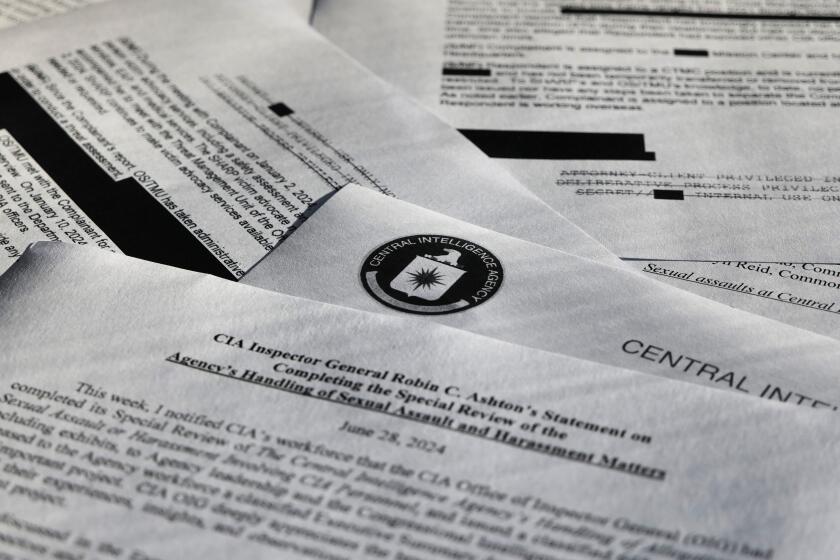Factory Workers Had Tank Crews’ Backs Covered
When more than 1,000 massive Abrams tanks led the charge into Iraq, they had a reputation for being invincible. In the 23 years since they were first fielded, not one had been lost to enemy fire.
But the 70-ton M-1A1 and M-1A2 armored battle tanks, developed to face Soviet armor on the fields of Europe, had a weakness: Heavily armored in the front, they are much more lightly protected in the back, where their exhaust pipes are.
Iraqi forces must have learned about the vulnerability: In the first days of the war, three tanks were put out of commission by Iraqi fire.
Within a week, not only had U.S. Army engineers come up with a new grille to protect the tanks, but a tank plant in Lima, Ohio, had shipped the new part to Iraq.
On Thursday, President Bush thanked plant workers for helping to quickly solve the problem. He said that after the request came in for a way to protect the tanks, “specialists at the plant went straight to work. Within a week, a new part was designed and manufactured and the first kits were shipped to Iraq. When our soldiers and Marines needed you most, you came through and America is grateful.”
It was a small moment in the sun for the Lima Army Tank Plant, which has been building weapons for the military since 1942. At the factory, where employees had worked long overtime shifts to manufacture louvered metal grilles that would fit over the tanks’ 3-foot-wide exhaust systems, there were cheers, applause and hollers in response to the praise -- especially when Bush went on to say that one welder, Mark Springer, had a particular interest in helping to resolve this problem because his son, Joshua, is serving as an M-1 tank commander in Iraq.
“The next time, Mark, you communicate with Josh, you tell him the commander in chief came to Lima to say how proud I am of his service and the others’ service to our country,” Bush said.
The tank’s vulnerability -- its superheated, powerful engine requires a huge exhaust system -- was not unknown to Army weapons developers, but plans for protection were shelved because the tank was not meant primarily for use in close combat.
“The M-1 was built for a different war,” said Col. Tom Stautz, director of the Agile Development Center of the Army’s Research, Development and Engineering command in Alexandria, Va. “It is meant to engage enemy threats at long range; it is meant to outgun them, to fire at longer range more quickly, more accurately than anyone else on the battlefield, and it does that superbly well.”
After an Abrams tank on the highway between Baghdad and Karbala was hit and disabled by a rocket-propelled grenade and two more were hit by rocket-propelled grenades as they approached Baghdad, commanders on the ground called for help.
“The commanders forward said we need some makeshift solution for this, and it was quickly turned over to our scientists and engineer sections,” Stautz said.
He said 20 grilles were sent in the first shipment to Iraq and delivered by helicopter to tank crews on the front lines, who installed the grilles themselves. Sixty more were made, but by the time they got to Iraq, the fighting was largely over.
“The field commanders quickly recognized that the rear exhaust mechanisms, which were the weak spot on the vehicle, became a vulnerability that was being exploited by Iraqi fighters,” Stautz said.
“These hands-on people at Lima and in our research labs did a great job of keeping the soldiers safe.”
More to Read
Sign up for Essential California
The most important California stories and recommendations in your inbox every morning.
You may occasionally receive promotional content from the Los Angeles Times.










